Wearable cameras are all the rage but should we all become lifeloggers?
We're all Big Brother now
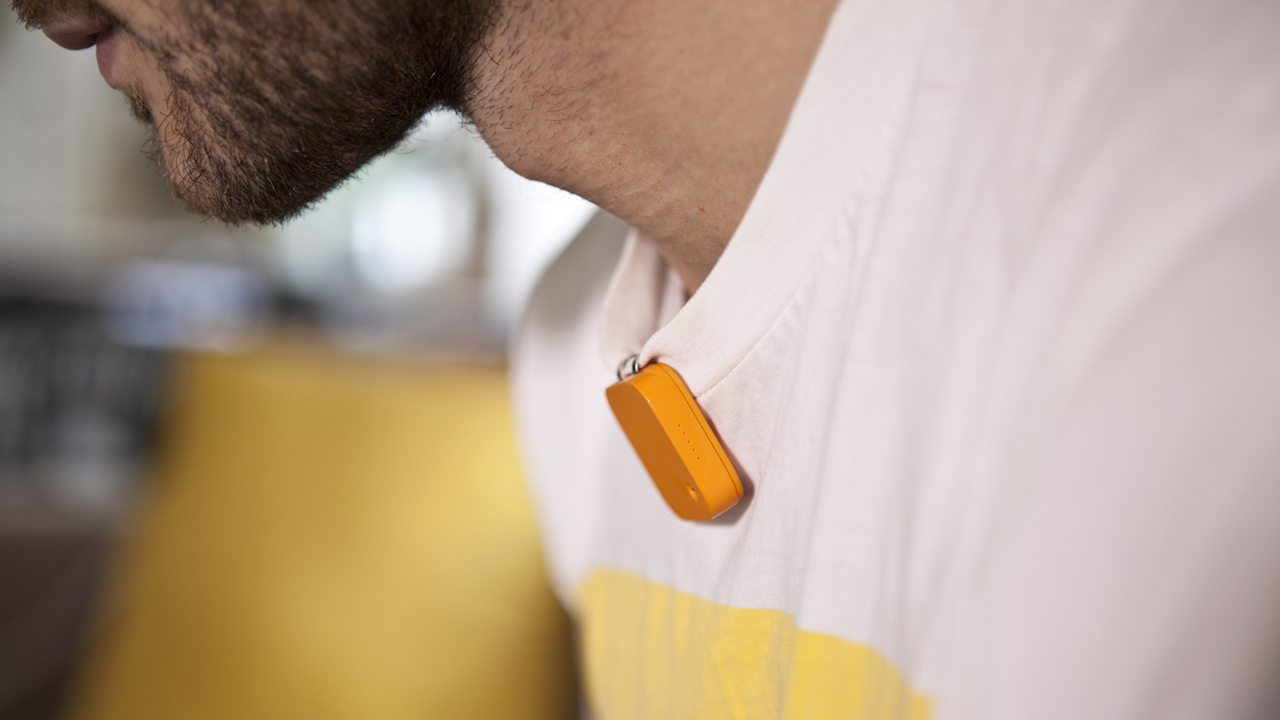
Life-logging is all the rage. Sony's new SmartBand SWR10 wristband records your activity, but not just the steps you take or the calories you burn. This wearable builds a profile of your everyday activities by logging the time you spend on Facebook, the songs you listen to and what you browse on the web, too.
That might be interesting for a few days, but if you want to get into life-logging for a real, you need a clip-on camera.
Able to film what you're doing, the resulting photos or video are time-stamped and often GPS-tagged, too.
Everyone's at it. Commuters underneath incoming asteroids in Russia have them in their cars, where cameras are routinely stuck on car dashboards for insurance reasons. Mad-cap climbers, cyclists and divers are wearing GoPro cams on their helmets and handlebars to film their latest adventures. While Google Glass… well, Google Glass is about to cause some kind of privacy law meltdown, isn't it? If anyone buys it, that is.
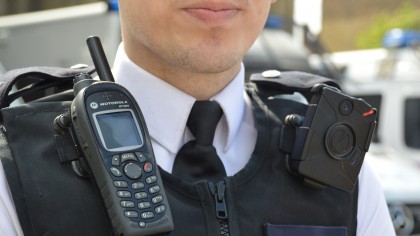
Even policemen are soon to wear clip-on cameras, with the Met now conducting a trial in London that's putting 500 TASER AXON body-worn video camera on policemen in nine London boroughs. For now, it's just specialist firearms teams that are training with the things, but it's hoped that 20,000 body worn video cameras will be rolled out to Met officers across London. As one of the world's largest police forces, what the Met does, everyone else copies. We've already seen them used in shows like BBC's Traffic Cops, but now it's for real.
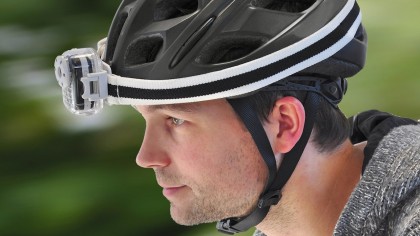
It's hardly surprising; what's more shocking is that they don't already wear them. "It makes you open, it makes you accountable and then if something's said afterwards, you can check," said Sir Bernard Hogan-Howe, the Metropolitan Police Commissioner. But it's misleading to think that wearable cameras are about openness or accountability – this is about digital evidence.
What is slightly scary is that all the video shot (ahem) by the police will be uploaded to a Taser-owned cloud service called Evidence.com that's run on Amazon Web Services. Now that's a cloud service that might possibly get some attention from hackers.
Get daily insight, inspiration and deals in your inbox
Sign up for breaking news, reviews, opinion, top tech deals, and more.
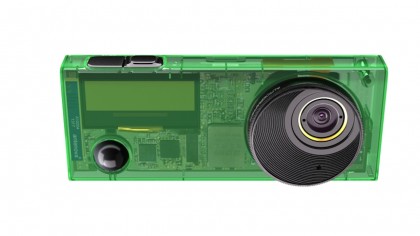
If the police are wearing cameras, shouldn't we all be doing the same, too? For most of us, the thought of filming everything we do is abhorrent. Imagine if we all did it. It sounds like an episode of Charlie Brooker's Black Mirror.
If 24/7 video is a tiny bit catastrophic for society at large, what about the life-logging camera? Treading a line far closer to entertainment than DIY totalitarianism, clip-on cameras are becoming popular with C-list celebs, women on hen weekends and other cutting-edge trend-setters as a kind of fun addition to a night out.
Having a moment
There are a few wearable life-logging cameras on the market already, such as the chubby 37x95x23mm, 58g Autographer and the tiny Narrative Clip. It was the latter that we spent a week with to check-out exactly what life-logging photography is all about.
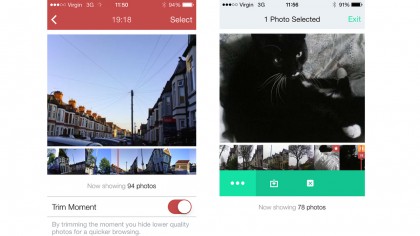
The tiny 36x36x9mm, 20g clip-on Narrative Clip doesn't film or photograph everything you see, rather it takes a picture every thirty seconds, or when you tap it twice. So what's it for? Hands-free photography is the selling point; it creates a searchable photographic memory, which on a special occasion or a holiday might be genuinely useful.
The Clip takes 5MP images and stores them on a 8GB flash drive, and the quality is decent. The app is pretty good, too, dividing all photos into edited 'moments'. Anything can be edited, exported or shared, though the nicest feature is the flick-book of a day. It's a great memory-jogger and a brilliant way to record a long walk or, yes, a particularly debauched night on the town.
Tapping the Clip twice to take a photo is so much easier than fumbling for a smartphone, and it's exactly that feature we used most of all.
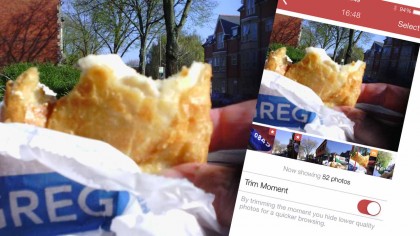
The Clip requires zero maintenance, it's easy to live with and has a very short learning curve. The trouble is, after its worked its magic actually getting the pictures off the Clip is too time-consuming. The Clip has to be attached to a laptop or desktop PC (how quaint) or Mac to upload its photos to the cloud, which then syncs with the app on a smartphone. It takes a long time to upload. Plus, the use of a remote cloud incurs a small monthly fee after the first (free) year.
What we do like about the Clip is that it's so small and secretive. Socially acceptable? Perhaps not, but who cares? In an entire week of wearing it, only one person noticed it, a glaring shop assistant, and he said nothing. Battery life wasn't much of an issue – if you're getting 10 highly memorable hours out of one day you're doing pretty well, though we were never sure if the Narrative Clip was switched-off. It recorded hundreds of pictures of the ceiling.
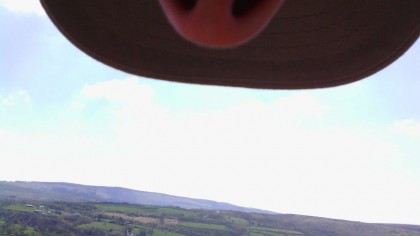
However, life-logging has three terrible downsides. The first is that it does record everything you do. Everything. Yes, it may very well capture a special moment that otherwise would have gone unnoticed, but that's not always a good thing, is it? Going to the loo, eating an extra-curricular snack or – and this was surprisingly common – the inside of your nose. Clothes move, but the Narrative Clip doesn't.
All of this is recorded to your Moments, which brings us to problem number two: life-logging isn't really about the wearer's life at all. Used on an average afternoon, the Narrative Clip captured several hundred pictures of my wife, my cat, and random people in the pub. Mostly it captured stupid expressions – and precisely zero special moments. It's pretty obvious that the life-logger is really only worth wearing on a special occasion, and it's only function is to capture things it really shouldn't be. Gents: avoid using toilets with large mirrors behind them.
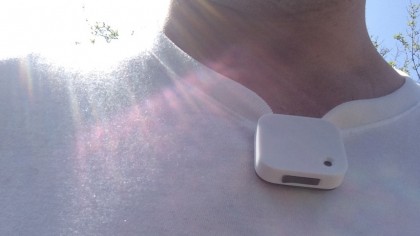
The third downside threatens the entire project. Towards the end of our test we took the Narrative Clip to a concert to see how it coped with low-light. The hope was that the Clip could single-handedly solve the social evil of otherwise law-abiding people holding up their smartphones on full brightness to film concerts, thus enraging everyone behind them.
Sadly, we didn't get the chance to check-out the results; it was probably the rapturous applause during the encore or perhaps the folded arms that followed, but something caused the Clip to un-clip. I didn't find that out until later and have no idea where it was lost – though rather ironically, those fateful seconds when it fell-off are documented by two pictures on the Clip. If only it synced by Bluetooth; I could have remotely accessed its photos and seen exactly where I'd lost it.
With compact camera gathering dust, could it be time to leave our smartphones alone, too? The new breed of clip-on cameras need a few tweaks and we're not convinced about its reliance on a computer, but it works really well as a memory jog. If only wearables weren't also fall-off-ables.
Jamie is a freelance tech, travel and space journalist based in the UK. He’s been writing regularly for Techradar since it was launched in 2008 and also writes regularly for Forbes, The Telegraph, the South China Morning Post, Sky & Telescope and the Sky At Night magazine as well as other Future titles T3, Digital Camera World, All About Space and Space.com. He also edits two of his own websites, TravGear.com and WhenIsTheNextEclipse.com that reflect his obsession with travel gear and solar eclipse travel. He is the author of A Stargazing Program For Beginners (Springer, 2015),
